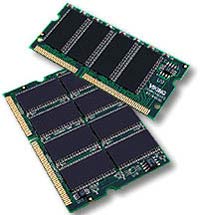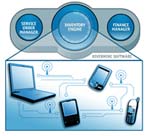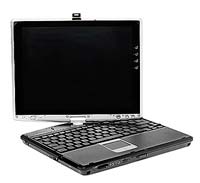As technology rapidly advances, your laptop can quickly become “outdated,” running slowly and lacking many hardware-dependent features. Upgrading a PC is relatively straightforward, but replacing a laptop, which is often a compact unit, can be more challenging. However, there are still ways to upgrade your laptop easily, even if it’s not a complete overhaul.
Processor
The laptop processor can be replaced quite easily. It is advisable to have a professional laptop service replace it for you, as a non-expert might cause damage.
Laptop processors are categorized into two types: Pentium III (PenIII) and Pentium IV (PenIV). The PenIII line is further divided into PenIII M and regular PenIII. You can upgrade the processor of a PenIII M laptop up to a maximum of 1.2 GHz, while the regular PenIII can only be upgraded to 1 GHz.
The PenIV processors are also split into PenIV M and regular PenIV. For the M series, the maximum upgrade is 2.4 GHz. The regular PenIV offers more options since it uses the same processors as PC models, allowing upgrades up to 3, 3.2, or even 3.4 GHz. Of course, with the regular PenIV, you must choose a processor compatible with the motherboard’s maximum capacity.
When selecting a processor, you also need to consider the CPU bus speed to ensure compatibility with the motherboard. The PenIII has bus speeds of 66, 100, or 133 MHz, while the PenIV series features bus speeds of 133, 400, and 533 MHz. Synchronizing these will help your laptop run smoothly and stably.
RAM
 When it comes to RAM, you must consider whether your laptop belongs to the PenIII or PenIV line. For PenIII, you can choose from three bus speeds when replacing: 66, 100, or 133 MHz. For processors under 500 MHz, opt for RAM with a 66 MHz bus; for 500-800 MHz, choose 100 MHz; and for 800-1,200 MHz, go for 133 MHz RAM.
When it comes to RAM, you must consider whether your laptop belongs to the PenIII or PenIV line. For PenIII, you can choose from three bus speeds when replacing: 66, 100, or 133 MHz. For processors under 500 MHz, opt for RAM with a 66 MHz bus; for 500-800 MHz, choose 100 MHz; and for 800-1,200 MHz, go for 133 MHz RAM.
With PenIV laptops, the CPU speed is crucial as it helps you select the right RAM. For CPUs under 1.6 GHz, select RAM with a 266 MHz bus. For 1.6 GHz and above, you can choose RAM based on the bus speed of your motherboard and CPU. If these speeds match, it will enhance your laptop’s performance and stability.
When selecting RAM, be aware that there are two types: DDR and DDR2. DDR RAM has bus speeds ranging from 266 to 400 MHz, while DDR2 can be 400, 533, or 800 MHz. The latest RAM technology for laptops typically operates at a bus speed of 533 MHz. Intel’s Centrino Sonoma series uses a Front Side Bus (FSB) that allows bus speeds up to 533 MHz with a 2M cache, suitable for laptops with a 533 MHz motherboard.
Replacing RAM is also straightforward; you don’t necessarily need to take your laptop to a shop. You can follow these steps: flip the laptop over, open the RAM compartment, push the RAM retention clips to release it, and gently lift it out. To install the new RAM, simply reverse the process.
Hard Drive
Laptop hard drives come in various types. First, determine which line your laptop belongs to. For PenIII laptops with CPUs under 500 MHz, the maximum hard drive capacity is 40 GB. In contrast, PenIV laptops can support hard drives up to 200 GB.
When purchasing a hard drive, ensure you choose the correct size for your laptop. There are two types: 2.5-inch drives for slim laptops like Toshiba Portege and Sony T series, and 3.5-inch drives for other brands like IBM, HP, and Compaq. Additionally, pay attention to the RPM (revolutions per minute) rating; higher speeds mean faster read and write times.
Typically, laptop hard drives are more prone to failure compared to RAM. To replace a hard drive, it’s best to visit a computer shop to avoid potential damage.
Display
Generally, screens rarely need replacement unless damaged for various reasons. The cost of replacing a screen can range from 200 to 500 USD, depending on the laptop model.
Wireless
 Older laptops typically do not come with built-in wireless capabilities. To enable web browsing via wireless networks in buildings or offices, you should consider upgrading your machine.
Older laptops typically do not come with built-in wireless capabilities. To enable web browsing via wireless networks in buildings or offices, you should consider upgrading your machine.
There are two options: external and internal upgrades. The external upgrade is simpler; you just need to buy a PCMCA wireless card or a USB wireless adapter. Installing these devices is easy, and typically, a PCMCA wireless card costs around 30 USD for B standard and 50-60 USD for G standard, depending on the type.
For the internal upgrade, your machine will be more compact, but this option is suitable primarily for PenIV laptops as they often have an empty mini PCI slot ready for a wireless card installation. You just need to purchase a Mini PCI wireless card and insert it into the available slot. However, it’s advisable to have professionals handle this installation. You can replace cards in other models, but it may involve removing the mini slot designated for the modem or LAN, meaning you will lose modem and LAN functionality. The cost for this type of card is approximately 40 USD for B standard and 80 USD for G standard.
CD/DVD
 |
|
Toshiba Portege M200 Tablet |
For reasons such as a faulty CD/DVD drive or dissatisfaction with a CD-ROM that only reads and does not write, you can replace your drive with a newer, multifunctional one. Available options include CD-ROM, DVD/CD-Rewrite, CD/DVD-Write, and CD/DVD-Rewrite drives. Each type comes with different pricing based on the laptop model. However, there are some standards to consider when making a purchase.
The standard drive requires you to open the laptop and replace it with a new one. This is not a hot-swappable drive, making the process a bit complex. However, most new drives are actually refurbished ones that have been used and resold after upgrades. These drives are mainly sourced from China and polished to appear new.
The second type is a Hot Swap drive, which is very convenient for replacement. You simply buy a compatible new drive, unplug the old one, and plug in the new one, even while the laptop is running. Some IBM laptop models have a shared Hot Swap slot for both floppy and CD/DVD drives.
The third type allows for external connection via USB, PCMCA card, or FireWire IEEE1394. However, these external drives require an additional power source.




















































